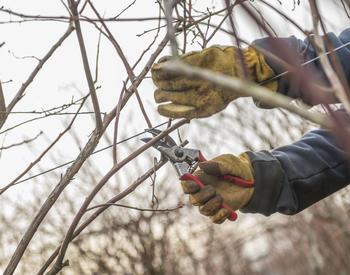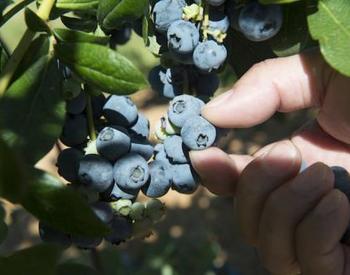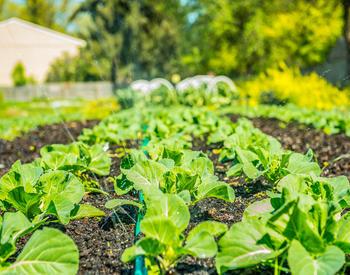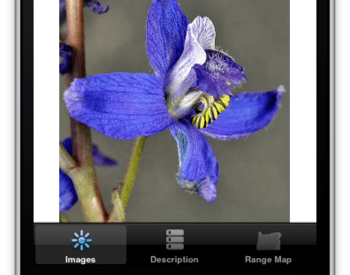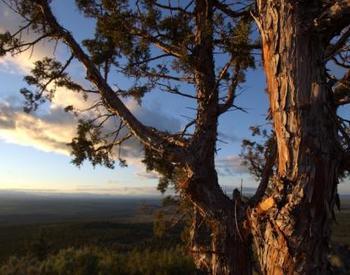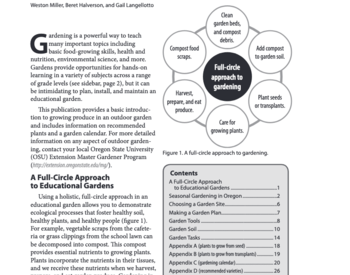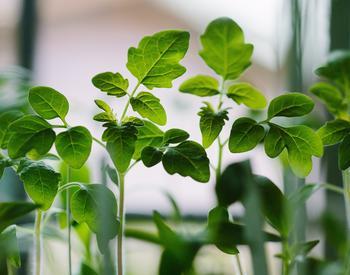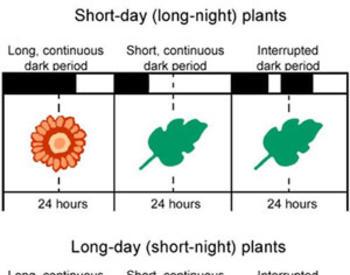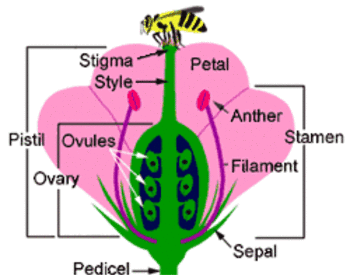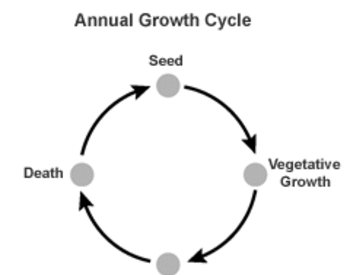Transcript
In this segment, we're going to be looking at some more complicated issues: codominance, types of dominance, leaders of trees, and even the types of crotches and which ones you might want to keep versus those that are less desirable in your tree. Tom's getting all prepared here up higher in our tree, and this is an opportunity where it's good to know that sometimes it's best to bring in the professionals and not try to do everything ourselves as homeowners. I'm starting to climb this tree right now, and you'll notice that I'm always tied in with something, a lanyard or a rope. I'm not free climbing, which, as Nicole said, as a homeowner, you might want to be leaving this to somebody with skills, equipment, insurance, and training. But you do definitely want to always be tied in whenever you're off the ground.
So, one thing that we have going right here is we have these two limbs rubbing against each other, and this has done quite a bit of damage to the back side of this. This is the type of pruning cut that we can make if we're observant very early on in the life of a tree. We want to avoid this whenever possible, and I'm going to eliminate that right now before I go any farther. And then, this will make it easier for me to move through the tree, and then I'll finish that cut on the way down. Everyone, be careful.
Essentially, the cuts I'm making up here are mainly conflicting and rubbing limbs, limbs that are going to create the same situation as the larger one that we cut off. Here we have a limb that's beginning to conflict; you can see it's actually already beginning to damage the tissue up there. So, we're going to cut that out now. And I'm also going to cut; here's an example of another one that's doing the same thing, growing right back into the center of the tree.
So, what we're on right now is we have the same issue with these two main stems. These are considered to be co-dominant, and there's a very tight crotch formed down where my foot is. I want to eliminate this stem. It's too late to do it all in one shot right now, so what we're going to do is something called subordination pruning, where we're going to reduce it higher up in the tree, and then over time, another three to five years, make another cut down here, and then finally make another cut down where my feet are. That will allow the tree to prepare biochemically; it will form a branch bark collar by then. There is not one formed right now.
So, you'll see what I'm going to do right now is I'm just going to make what's called a reduction cut and also a subordination cut. Okay, can we everybody be careful? Cuts right here that I'm going to make, so we want to be at least the height of that cut away from the tree. We want to be a good 25 feet away from this tree right now, and I'm going to make a snap cut here. I'm going to make two cuts and then control the back and remove the piece.
So now, I have to make one more cut here to finish for this pruning cycle. It's going to be right here. Okay, so we're done for now. As we explain as we come down, I'll show you better. This is a very, very tight crotch right here, what we call a V-form crotch. You can see that there's a crack beginning to extend down below. Structurally, this is really bad for the tree; you want to eliminate it whenever possible. And I'll show you an example of a more desirable crotch if you get a little lower, like right here. This is far more open; you can see that's on a 30-degree angle or so right there. That's much closer to a U-form than a V; this will be structurally stable over the life of the tree.
Now, here we're removing the final cut on the initial piece, codominant, I took out. Okay, and one more cut because of the way that was conflicted up in this area. And that's all we feel we're going to take out of this tree for one pruning cycle. [Music]
Some tree pruning issues that require professional help, and a demonstration of how a professional assesses a tree’s structure.
